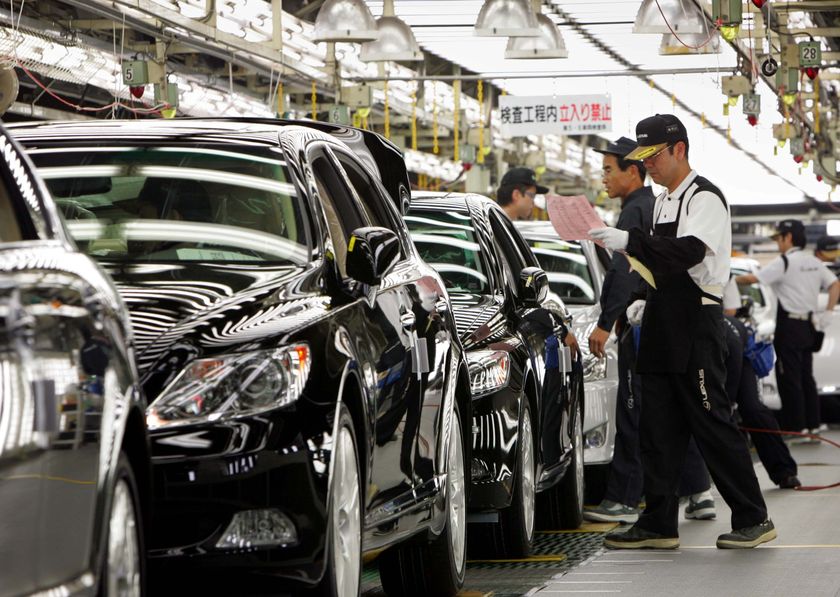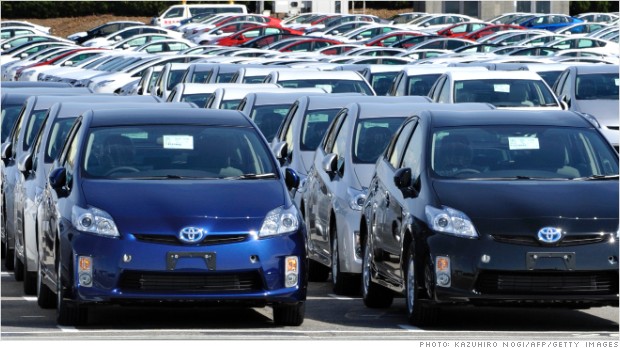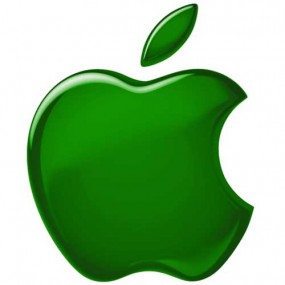
People associate Toyota cars with durability, fuel efficiency, affordability and comfort.
In 2013, Toyota's sales totaled around 7.412 million vehicles worldwide , up 0.1 percent from the same period a year ago, making them the #1 car manufacturer beating rivals 'General Motors' and 'Volkswagen AG'.
Analysts expect Toyota to post 2.4 trillion yen ($24.7 billion) in operation profits for the year ending March 2014, more than the record 2.27 trillion yen it hit in the year ended March 2008, due to a weaker yen which makes exports more profitable.
Lets have a look at Toyota's strategic management in an Ansoff's Matrix.

Strengths.W.O.T:
Toyota is #1 when it comes to R&D, it has been researching and developing environmentally-efficient mobility solutions for more than 40 years. As a result, it has established a significant lead in the design and production of full hybrid powertrain technology ahead of rival companies(BMW, Volkswagen, General Motors etc)

(Reference: Booz & Company)
Wide Range of products
Having a wide range of products means more variety for consumers, this leads to more consumers, resulting in a higher sales volume.
Having a wide range of products means more variety for consumers, this leads to more consumers, resulting in a higher sales volume.
Toyota's range of cars go from the very bottom to top. With makes such as trucks, hybrids, family sedans, SUVs and sports cars.It has become a household name. Toyota has got a good grasp of the geographic, demographic, psychographic, behavioral, and product related principles of every country it markets to.

Diversification
When a company that focuses on a narrow range of products will only have access to a finite number of customers. Diversification is therefore importance for any business to ensure survival, market expansion and attracting new customers, opening doors previously closed to it.
When a company that focuses on a narrow range of products will only have access to a finite number of customers. Diversification is therefore importance for any business to ensure survival, market expansion and attracting new customers, opening doors previously closed to it.
Toyota diversified and operates a luxury car division, Lexus. This other sister company of Toyota manufactures premium cars to cater for wealthier consumers. Lexus has landed $18.7 billion in sales and has become the 73rd wealthiest company world wide.
(Reference: Forbes, http://www.forbes.com/companies/lexus/)

At the core of the company’s success is the Toyota Production System
Having a cost effective, reliable and robust production line is a huge advantage in a manufacturing industry.
One example would be when Toyota engineer, Taiichi Ohno, turned necessity into virtue. He came up with a system to get as much as possible out of every part, machine, and worker. The principles were simple and obvious, do away with waste, ensure parts arrive on time, fix problems as soon as they arise. This isn't fascinating rocket science, it is similar to the principles of Henry Ford's "Fordism"

Innovation at its highest
Innovation is what gives a company the competitive edge in terms of productivity, sales and brand image, just to name a few.
In production line, one example would be that Toyota developed the andon cord, which any worker can pull to stop the assembly line if he notices a problem and kanban, a card system that allows workers to signal when new parts are needed.
(Reference: Forbes, http://www.forbes.com/companies/lexus/)

At the core of the company’s success is the Toyota Production System
Having a cost effective, reliable and robust production line is a huge advantage in a manufacturing industry.
One example would be when Toyota engineer, Taiichi Ohno, turned necessity into virtue. He came up with a system to get as much as possible out of every part, machine, and worker. The principles were simple and obvious, do away with waste, ensure parts arrive on time, fix problems as soon as they arise. This isn't fascinating rocket science, it is similar to the principles of Henry Ford's "Fordism"

Innovation at its highest
Innovation is what gives a company the competitive edge in terms of productivity, sales and brand image, just to name a few.
In production line, one example would be that Toyota developed the andon cord, which any worker can pull to stop the assembly line if he notices a problem and kanban, a card system that allows workers to signal when new parts are needed.
Andon cords can now be found in almost every car factory today.
Technology innovation
Toyota has been developing various safety technologies by using different measurements towards realising the ultimate goal of making a vehicle that is safe for everybody. Such enhancements includes intelligent collision warning, traffic monitoring systems, cars to power up homes.
The most interesting development is developing electric cars to not only receive power but with the ability to power up homes. A new way to save energy if the car(s) has excess energy.
S.Weakness.O.T
Oversupply of cars
Being big has its problems. The world's market demand for cars is in a condition of over supply.
Car manufacturers need to know the models of cars consumers are after. Toyota markets most of its cars in the US and Japan. This leaves Toyota exposed to the fluctuation economy and political conditions in those markets. As a result of this, Toyota has to shift its market towards other countries such as China.

Production uncertainties
Car factories require huge investments in expensive fixed costs. Toyota needs to constantly produce cars in order to retain its operational efficiency and sales growth.
However, should the car market experience a down turn, Toyota could see over capacity. On the other hand should the market experience an upturn, Toyota might miss out on potential sales due to under capacity. A common problem with high volume car manufacturing as it takes time to adjust to the current situation in each country.

Large-Scale recalls
Toyota had quite a few large-scale vehicle recalls over the past few years. The business recalled 9 million vehicles in 2009-2010 and 7.43 million cars in 2012. Such recalls does not only hurt the firm financially but significantly damages firm’s brand image. (Reference: http://www.bbc.co.uk/news/business-19894322)

Weak presence in the emerging markets
Toyota’s main markets are Japan, US and Europe, while such emerging economies as China or India make only a small percentage of all Toyota’s sales. Due to poor presence in the largest automobile market (China), Toyota will find it hard to compete with General Motors that has huge market share there.
S.W.Opportunities.T
Increasing Fuel Prices
As the price for fuel and petrol increases, consumers may decide to switch to energy efficient “green” vehicles. This can open up a large market for Toyota’s hybrid cars.
Positive Attitude Towards Green Vehicles
As there is a growing trend of social responsibility, more consumers are now aware of the large amounts of carbon emissions cars produce that can harm our environment. Thus, more consumers are switching to buy hybrid and electric cars that emit less CO2. Thus, the market for electric and hybrid vehicles is growing.
Toyota’s great efforts in the hybrid and electric car segment puts Toyota in a good position to become a leader in the market for these types of cars.

Growth Through Acquisitions
Toyota may acquire other car companies, as they have done in the past, so as to grow, gain assets, new skills and access to markets that they have not successfully entered.
Car companies aside, Toyota could acquire marketing and material production companies.
Infact, Toyota has acquired the later having successfully completed its acquisition of Cascade Corporation for $65.00 per share in a transaction valued at approximately $760 million. Cascade is one of the world's leading manufacturers of materials handling load engagement devices and related replacement parts. (Reference: http://www.marketwatch.com/story/toyota-industries-corporation-completes-acquisition-of-cascade-corporation-2013-03-28)
Car companies aside, Toyota could acquire marketing and material production companies.
Infact, Toyota has acquired the later having successfully completed its acquisition of Cascade Corporation for $65.00 per share in a transaction valued at approximately $760 million. Cascade is one of the world's leading manufacturers of materials handling load engagement devices and related replacement parts. (Reference: http://www.marketwatch.com/story/toyota-industries-corporation-completes-acquisition-of-cascade-corporation-2013-03-28)
S.W.O.Threats
.jpg)
Competition From Other Car Manufacturers
Toyota has many strong competitors. One of them is Volkswagen, who has a strong global presence and owns 13 automotive brands, including Audi, Bentley and Porsche. The biggest threat being GM, who is stepping up to become more competitive after its reorganization.
Intense competition might lead to a saturated market.
Rising cost of raw materials
Raw materials are especially important to automobiles manufacturers. Higher prices mean higher costs and less profits for Toyota as the raw metals are the main components in car manufacturing.
Intense competition might lead to a saturated market.
Rising cost of raw materials
Raw materials are especially important to automobiles manufacturers. Higher prices mean higher costs and less profits for Toyota as the raw metals are the main components in car manufacturing.
Natural Disasters
An earthquake could tear a city apart, what more a factory. After the earthquake’s occurrence on March 11, 2011, Toyota temporarily suspended operations at all of
its domestic factories due to damage to social infrastructure including energy supply, transportation systems, gas, water and communication systems caused by the earthquake
(Reference: Toyota's Annual Report 2011)
Toyota's suppliers too were affected and this resulted in a domino effect. All from a single act of nature.
(Reference: Toyota's Annual Report 2011)
Unfavourable exchange rate
Since Toyota’s revenue is mostly from foreign countries, profits that are earned abroad would be converted to yen when it is sent back to Japan. Thus, as the yen is appreciating against other currencies, Toyota’s profits would be lower.
Conclusion
As strong a company Toyota might be as the whole world knows, it is no different than any others. A paradox in itself. Toyota is subject to the ever changing political, economic, natural and consumer behaviour environments, just to name a few.
An example of a company that has done astronomically well. However some improvements such as manufacturing 'Super sports' cars to compete in the 'Horse power' market or perhaps take diversification to a new level by introducing house hold appliances like what competitor Mitsubishi has done.
With Toyota's brand image, expertise and resources and dedication I believe that the above mentioned is achievable if the right amount of effort and time is spent.
Conclusion
As strong a company Toyota might be as the whole world knows, it is no different than any others. A paradox in itself. Toyota is subject to the ever changing political, economic, natural and consumer behaviour environments, just to name a few.
An example of a company that has done astronomically well. However some improvements such as manufacturing 'Super sports' cars to compete in the 'Horse power' market or perhaps take diversification to a new level by introducing house hold appliances like what competitor Mitsubishi has done.
With Toyota's brand image, expertise and resources and dedication I believe that the above mentioned is achievable if the right amount of effort and time is spent.




















